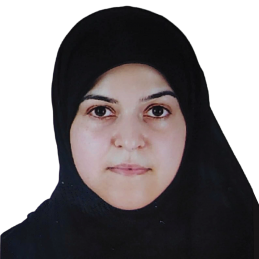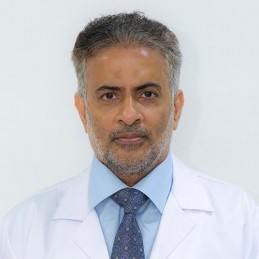Oman neurology society (ONS) is non-governmental and non-profit organization working under the umbrella of Oman medical association (OMA).
ONS members are neurologists and other physicians, nurses and technicians working in neurology related fields.
Who we are?
Oman neurology society (ONS) is non-governmental and non-profit organization established since 2007 and works under
the umbrella of Oman medical association (OMA).
ONS members are neurologists and other physicians, nurses and technicians working in neurology related fields.
OUR MISSION
Is to support and enhance the excellence of neurology clinical, academic and research competencies in the Sultanate of Oman, for better patients’ healthcare.
Our Vision
Advancing neurology through collaboration, education and advocacy and promoting the highest quality patient-centered neurologic care through enhancing members’ satisfaction
OUR VALUES
Respect
Oman neurology society embraces the uniqueness and dignity of every person.
Professionalism
We work collaboratively as a committed team, to share our expertise and use informed decision-making in service of others to improve the quality of neurological care.
Excellence in Education
All of the society's educational efforts must reflect excellence in their quality, relevance and delivery.
Integrity
We set and maintain the highest ethical standards for our activities, programs and services.
Board Members
BYLAWS
Clubs
A group of active members of the Oman Medical Association, including medical and allied medical groups from one discipline/specialty, with the aim of focusing on scientific, research and educational medical activities in relation to the specialization of the medical society/club
Objectives of the club
Strengthening ties, strengthening the numbers of its’ members and including specialties from the association's general specialization to be a branch with an integrated entity under the umbrella of the Oman Medical Association.
- The terms, conditions, scope and objectives of the association's work apply to the club/society as it belongs to the associations.
- The club is a branch of the Association.
- The club is limited to a specific medical, scientific or research specialty framework.
- Five active members of the association, specialized in the field of the club's specialization, should make the application.
- If the Board of Directors approves the application, it will be forwarded to the Board of Directors of the Medical Association for final approval.
- Active members of the association can join the club.
- The club has a management group consisting of four to seven key positions: president, vice president, secretary and rest of the members.
- The president of the club and the secretary general are chosen by internal election within members when there are multiple competitors.
- The legal period of the club is limited to a period of two years.
- A member of the Board of Directors of the Association is required to be assigned to the club's administrative group.
- The Association supervises the club administratively and financially.
- The club has a semi-independent financial file in terms of exchange and deposit.
- The Association's bank account is used for the club’s financial transactions.
- Each club is set with an internal financial mechanism in the association.
- Spending/withdrawal is by request from the group's president to the treasurer of the association, following the procedures and processes of transactions.
- The treasurer is informed by the president of the club of any amounts deposited into the association's account to be included in the internal club account.
- The Association has the right to financial supervision of the club.
- The Board of Directors of the Association supervises the functioning of the club and follows up its activities.
- Signed communications can be issued by the president of the club, provided that the president of the association agrees and is included by (Through) the president of the association or his acting.
- The association's board of directors must be informed and approve any scientific and social event organized by the club and in concordance with the association's followed procedures.
- The logo of the association and the club should be placed on any events, leaflets and advertisements issued by the club.
- The club has the right to address institutions and entities from outside Oman and to abide with them only after the final approval of the Board of Directors of the Omani Medical Association addressed by the Board of Directors of the Association.
- The Association has the right to suspend the club in the event that the club does not comply with the requirements of the association's bylaws or if it violates the terms of the relationship between the association and the club after warning in writing. If this is repeated, the Association has the right to dissemble the club's board of directors and announce the formation of a new board of directors.
Guidelines for
Advertisements in ONS Website and Publications
Terms
The following guidelines have been established by the Oman neurology Society for https://www.omanneurologysociety.org/ and any other media sites related to the ONS. It also governs various aspects of advertising within the ONS publications, including print publications, websites, emails, and mobile applications.
As used in these guidelines, the terms "Advertising" and "Advertisements" include third party banners, contextual advertising, and sponsored content, which include paid advertising by commercial entities for services including: pharmaceutical products, medical devices, patients’ communities, insurance companies and any other medical services.
Advertising, as referenced in this document, does not include classified, not‐for‐profit, and ONS in‐house advertising.
These guidelines govern issues of acceptance of advertisements, how advertisements are displayed in the ONS website, social media, publications, and the removal of advertisements.
The ONS has sole and absolute discretion with respect to interpretation and enforcement of these guidelines and all other issues associated with advertising.
The ONS board may change these guidelines at any time in its sole discretion by posting revised guidelines.
Under no circumstances will the acceptance of any advertisement be considered an endorsement of the product(s) and/or service(s) advertised or for the company that advertises, manufactures, distributes, or promotes the products or services.
Uniform Guidelines
1. The term of advertisement is of a maximum 6 months, renewable by ONS board approval after submitting a renewal request by the advertiser.
2. The term fees (specified by a contract) are payable to the ONS bank account through bank transfer or by a cheque to ONS.
3. Materials to be advertised have to be submitted to the ONS board for contents approval.
4. Any images, words or phrases that are potentially lewd, suggestive, offensive, exaggerated, frightening or demeaning are not permitted.
5. Images must be consistent with the content of the advertisement. No images of, names of, or quotes from actual physicians or scientists or company’s sites, factories and offices that are advertising may be used.
6. Products are defined as pharmaceuticals or devices rather than brands or services, such as a hospital, clinic, or academic department. Quotations from published references may be used.
7. All claims mentioned within an advertisement unit must contain a citation or asterisk and a reference to the study’s primary outcome measure, and cannot be skewed for the benefit of the advertiser. The citation and reference must be included. This includes:
a. Clinical trials
b. Efficacy claims for pharmacologic treatment or therapeutic devices
c. Competitive products mentioned in the advertisement
d. Exclusivity/novelty claims (“the first,” “the only”) need not be referenced since these claims are regulated by the FDA.
8. The ONS prefers references from original, peer‐reviewed article(s); however, if not available, references must be clearly stated as “Data on File,” “Prescribing Information,” or “Package Insert,” and be easily accessible to the reader on the creative portion of the advertisement unit. In the case of novelty claims unrelated to orphan drugs, citations may reference studies showing use of the product for the condition for which the claim is being made.
9. Advertisements can neither include a Continuing Medical Education (CME) offerings or credit, nor test pages.
10. Conference advertisements will be considered on a case-by-case basis; after discussion and approval by ONS board. Fees may be waived according to the board decision for local, regional and international scientific conferences in the field of neuroscience.
11. The types of advertisements that are not permitted include, but are not limited to: illegal or objectionable products; fraudulent, deceptive, illicit, misleading, or offensive material; material that misrepresents, discriminates (real or implied), or attacks an individual or group on the basis of age, national origin, race, religion, gender, disability, or any protected class or other status deemed inappropriate like alcohol; weapons, addictive and tobacco products.
12. References to other society/organizational guidelines are subject to ONS approval.
Design:
1. For all digital advertisements, the advertiser must provide of all sizes for approval and the url link to the product landing page for reference. The must include links to the package insert. If the advertisement mentions a claim, then it must include a citation or asterisk and reference(s) within the advertisement space itself. If space is a constraint, the reference may be abbreviated. Acceptable reference abbreviation is first author name and et al, journal name, volume, page numbers.
2. Digital (including but not limited to tablet, mobile, and online) advertisements must have the word “Advertisement” at the top or bottom of the advertisement.
3. The word “ADVERTISEMENT” must appear in boldface type (minimum 12‐point font size) at the top‐ center of each page of ALL advertorials, case studies, disease awareness advertisements, and business reply cards (BRCs). Such material should be designed so that it is clearly distinct in look from the ONS site content.
4. Company logo must appear prominently at the top and/or bottom of each page.
5. The title must be boxed or a separation line placed between it and the text.
6. The title and text must be in fonts easily distinguishable from fonts used in the ONS website/media/prints title and text.
7. One page spread is the maximum ad unit size for advertorials in JPG format with a short summary and the link to the product’s web site.









